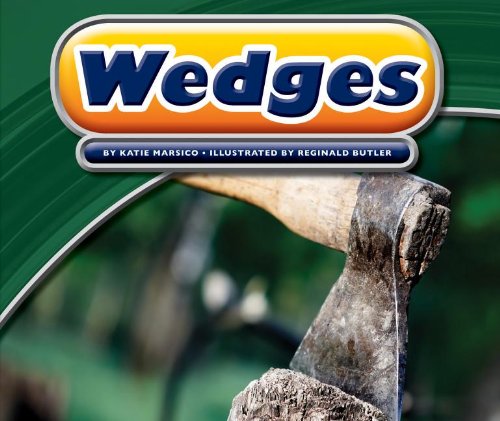-
Planes And Other Aircraft
Nigel Hawkes
Paperback (Copper Beech, Oct. 1, 1999)Provides middle readers with an illustrated look at planes, helicopters, balloons and gliders while exploring their design, engines and more, complete with index, model plans and glossary. Simultaneous. W
W
-
Simple Machines: Wheels & Axles
Valerie Bodden
Paperback (Creative Paperbacks, Feb. 2, 2011)"A foundational look at wheels and axles, explaining how these simple machines work and describing some common examples, such as doorknobs, that have been used throughout history"--Provided by publisher. L
L
-
Levers
David Glover
Library Binding (Heinemann, May 8, 2006)How are wheelbarrows, can openers, and bicycle brakes alike? Why is it easier to hold a bolt tight with a pair of pliers than with your bare hands? Why is it easier to eat a carrot with back teeth than with your front? Why is a seesaw considered a machine? This book shows you how different kinds of these simple machines are all around you to make your work and play easier. Q
Q
-
Simple Machines: Levers
Valerie Bodden
Paperback (Creative Paperbacks, Feb. 2, 2011)"A foundational look at levers, explaining how these simple machines work and describing some common examples, such as crowbars, that have been used throughout history"--Provided by publisher. L
L
-
Wheels and Cranks
David Glover
Library Binding (Rigby Interactive Library, June 1, 1997)Introduces the principles of wheels and cranks as simple machines, using examples from everyday life. M
M
-
Wheels & Axles
Valerie Bodden
Library Binding (Creative Educ, Jan. 1, 2011)"A foundational look at wheels and axles, explaining how these simple machines work and describing some common examples, such as doorknobs, that have been used throughout history"--Provided by publisher. N
N
-
Working with Wedges
Ronald Machut
Paperback (PowerKids Press, July 15, 2019)A wedge is two inclined planes joined together. When joined, the inclined planes form a sharp edge. Inclined planes are stationary objects, whereas wedges are active objects. When force is applied to the flat side of the wedge opposite the sharp edge, parts of the object become separated. For example, an ax is a metal wedge that splits a piece of wood apart. Readers will be provided with a number of examples of wedges, where they're found, and the wedge's historical uses. M
M
-
Inclined Planes
Katie Marsico, Reginald Butler
Library Binding (Childs World Inc, Aug. 1, 2012)Readers learn how this simple machine makes it easier to move things to different levels. They learn how flatter slopes use less effort than steeper slopes. By the end of the book, readers know the difference between complex and simple machines and how inclined planes are used in everyday life to make lifting and lowering objects easier. L
L



